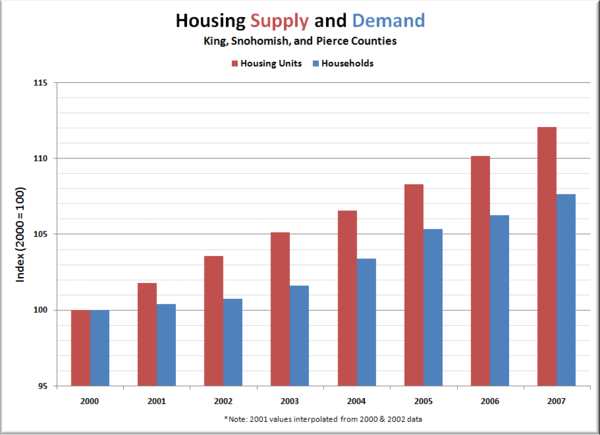According to a research report by Savills Estate Agents, the current supply of housing in London remains a third below the minimum target set by the Mayor, Boris Johnson. The report goes on to project that this deficit will remain at an average level of 35% over the course of the next five years. Other reports indicate that the gap may actually be much wider, with some predicting a 50% shortfall, which equates to 10,000 homes per annum. Perhaps most worryingly, the biggest housing shortfall is in the lower mainstream market (those with a value up to £450 per square foot). This particular sector only accounts for 20% of the housing supply, despite the fact that over 60% of London’s households have an income of less than £70,000 per annum. And of course this shortfall is set against a population that continues to grow. So exactly what are the causes of this problem, and what are the future prospects for bridging the property supply gap?
Of course the current economic climate plays a significant part in the current housing supply issue; however this is not the full story. Indeed, financing options for affordable housing are still very limited, with the loss of the social housing grant proving a real issue. With less incentives to invest, and more limited financing options available, developers are understandably cautious. This has been further compounded by changes to the national planning system made by the current coalition government, which aimed to replace the ‘top-down’ system introduced by the Labour government with a more locally focussed system. Whilst these changes to the system have been broadly welcomed by local authorities, the abolition of regional based incentives for developers has created an environment of widespread uncertainty for developers. It’s clear that current conditions are challenging for property developers in general.
One possible ‘way out’ of the morass would be to open up current planning restrictions on greenfield developments. The high brownfield targets imposed by the previous Labour government certainly restricted development opportunities. The rights and wrongs of this policy are beyond the scope of a short article like this; however it is unlikely that the Coalition government will reverse this policy, not least because it would be politically unpopular, particularly amongst Liberal supporters. Which leaves us with a stark choice- how do we weigh up the demands of housing a rapidly increasing population whilst protecting our greenbelt land. I’m afraid there’s no simple answer to that question but what is certain is that we must face this dilemma collectively sooner rather than later.
Fleur Rowan works for WhatNewHomes, a site that provides the latest news and articles on the UK property market.

